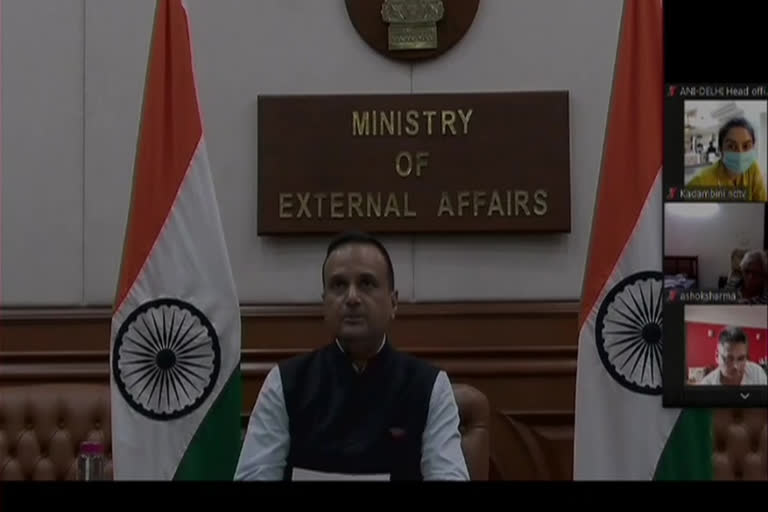New Delhi: Ministry of Home Affairs on Thursday said that China has been amassing a large number of heavy troops along the LAC and India had to make a counter deployment.
At an online media briefing, External Affairs Ministry Spokesperson Anurag Srivastava gave a run down of the events along the LAC in the eastern Ladakh region and held China responsible for the Galwan Valley clashes off June 15.
"Obviously, the Indian side had to undertake counter deployments and the resulting tension has thereafter expressed itself," he said.
MEA spokesperson Anurag Srivastava said, "The Chinese side has been amassing a large contingent of troops and armaments along the LAC. This is not in accordance with the provisions of our various bilateral agreements, especially the key 1993 Agreement on the Maintenance of Peace and Tranquility along the Line of Actual Control in the India-China Border Areas."
Calling it to be a complete disregard of mutually disagreed norms, Srivastava added, "Over many years, both sides have developed patterns of patrolling and it is a reasonable expectation that patrols will not be obstructed in the discharge of their legitimate duties. Unfortunately, we have experienced in the last many years obstruction to patrolling that often accompany efforts to unilaterally change the status quo."
In early May, he said, the Chinese side took action to hinder India's "normal, traditional" patrolling pattern in the Galwan Valley area while it sought to change the status quo in other areas of the Western Sector in mid-May. "We had registered our protest on the Chinese actions through both the diplomatic and military channels, and made it clear that any such change was unacceptable to us," he said.
Subsequently, senior commanders met on June 6 and agreed on a process for de-escalation and disengagement along the LAC that involved "reciprocal actions", he said. Srivastava said both sides had agreed to respect and abide by the LAC and not undertake any activity to alter the status quo.
"To provide for situations where the two sides encounter each other, a set of procedures and norms have been mutually agreed upon. These are reflected in a number of agreements and understandings. While there have been occasional departures in the past, the conduct of Chinese forces this year has been in complete disregard of all mutually agreed norms," he said.
India has never attempted to change the status quo of LAC and has not undertaken any action to unilaterally change the status quo. However, that has not been reciprocated by the Chinese side and from time to time there have been face-offs.
READ: India is laying network of roads till China border
The spokesperson said, "We have always made our position clear on the unfolding developments in the Western Sector of India China Border areas. In particular, our statement of 20th June provided the relevant facts and clearly established it has been the Chinese actions thus far which have led to increasing in tension in the region and also to the violent face-off of 15th June with casualties."
"The deployment of a large body of troops and changes in behaviour has also been aggravated by unjustified and untenable claims. The recent shift in the Chinese position on the Galwan Valley is one example," MEA said.
MEA added, "The maintenance of peace and tranquillity in the border areas is the basis of our bilateral relationship. It is imperative that the established mechanisms are used by both parties to address the current situation. The meeting of the Working Mechanism for Consultation & Coordination on India-China Border Affairs (WMCC) yesterday was, therefore, a significant development. It was preceded by a discussion among senior military commanders on 22 June that focused on the implementation of the understandings reached between them on 6 June 2020."
It is expected that the Chinese side will sincerely follow up on this understanding and ensure the expeditious restoration of peace and tranquillity in the border areas. A continuation of the current situation would only vitiate the atmosphere for the development of the relationship. (With inputs from PTI)
READ: India needs S-400 now as border dispute with China enters new phase



